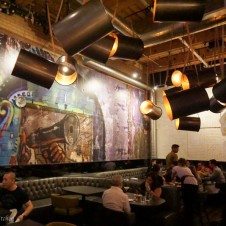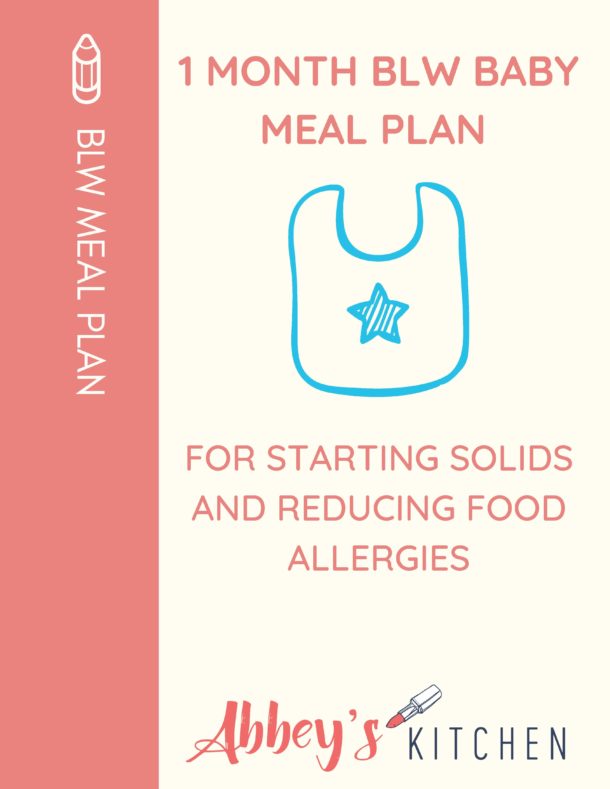In this blog post we’ll be discussing the psychology behind how the grocery store encourages unhealthy eating and some healthy grocery shopping tips.
Ever wonder why you go to the grocery store for the usual items like milk and eggs, but somehow ended up polishing off half a chocolate bar and bag of chips by the time you get home? Or when you’re at the checkout and “a quick trip to the market” turned into a $100 charge? While we can write lists and resist temptation at home if we don’t buy the food, it becomes a different story when the grocery store makes choosing the unhealthy choice seem like the easiest choice. Research suggests that half of our grocery purchases are unintended. Even though we tend to blame ourselves for picking up that case of soda pop, believe it or not, the supermarket is actually set up to encourage us to purchase more, and evidently purchase processed, packaged, and more often than not, less healthy items. The path to eating healthy and staying on budget is a long and winding road through the different and tempting aisles. Let’s take a closer look at the most common shopping mistakes and some healthy grocery shopping tips to prevent them.
How the Grocery Store Encourages Unhealthy Eating:
Sugar, Spice, and Everything Strategic
Disclaimer: This is in no way an accurate representation of every grocery store, however, the next time you’re shopping, be aware of the layout, and how it may mirror some of the themes discussed here along with some of the healthy grocery shopping tips to prevent getting tricked.
Entrance and Music

We’ll start at the beginning of your journey when you first enter the store: usually the store will have a one-way gate or door for the entrance, and to exit the store you have to walk around to the checkout. While this may seem like it’s for security purposes, it does serve as a method to make you stay longer in the store than leaving the second you walk in (basically, you’re trapped). Also, have you ever noticed the music playing? Usually calm, slow, and inviting music is played to give the customer a welcoming feeling, so an individual doesn’t feel rushed, and generally evokes a positive attitude and experience when shopping.
The math is simple: no rush to shop + longer time in the store = you’ll probably spend more.
Shopping Carts

A study on mindless eating found that individuals will eat more with a larger plate, and feel less satisfied with the same amount of food on a larger plate in comparison to a smaller one. The results from this study concluded that we tend to eat more without even realizing this – also known as mindless eating. Bare with me, it may seem like a stretch, but, this same concept can be applied to shopping carts in comparison to baskets. While most people can fit what they need in a shopping basket, the carts are enlarged to encourage purchasing behaviours. Most people will not put more than they can carry or fit in a basket, but with a spacious empty-looking cart, people may feel the desire to add more.
To sum all this up: the bigger the shopping cart + endless items in the store = the greater likelihood you will purchase (and subsequently eat) more.
Produce, Bakery, and Floral Sections
Once you have passed the doors of no return and you’re shopping to the beat of the music, usually the first sections you see are the produce, bakery, and floral, radiating their beautiful colours. The first impression of the grocery store is that it’s vibrant, fresh, healthy, and smells delicious. Grocery stores understand the importance of stimulating senses with increased lighting in these areas to highlight the different colours, as well as evoke familiar and delicious smells like that fresh apple pie your mom used to make. In my own experience, when I’m still in the underground parking lot of my grocery store I can smell the fresh bread and it’s hard to resist the temptation. This curated experience encourages us to shop with our stomach, rather than with our head or shopping list.
Smells delicious/fragrant + looks tasty/beautiful = you are more tempted to buy it … and you probably will.
Staple Items (Meat, Dairy, Eggs)
Pop Quiz: Where can you find all the “essentials” like milk, eggs, and dairy products kept in the grocery store? In the back of the store!
To get to the essential food items you have to walk through a large portion of the store, including possibly going in-between distracting aisles that are showcasing bargains you can’t pass up. With the goal in mind that you just need milk, head to the back, and never look back.
Sample Stations
Many people will agree that the free samples given are done to encourage you to try new products without commitment or any fees, and not as a refreshment snack. Another study reviewing mindless eating compared having sweets and fruits in plain sight versus having them put away; participants were more likely to consume the food if it was within reach and they could see it. Although this study observed the home environment, the grocery store may use mindless eating behaviours to encourage consumption, too. For instance, products that would have gone unnoticed in the aisle, you’re now in line waiting to try it, because they’re cooked, free, and most importantly, readily available. From personal experience, they’re never, ever, ever, ever, showcasing fresh bananas and kiwis, because they’re most likely giving out samples of processed and packaged products. By the time you try that small sample, you’re more likely to purchase it, crave it, and eat it on an ongoing basis. Sample stations are usually located in high-traffic areas for three reasons: more people will visit the aisle, it slows down the traffic, and the product is usually within arms-reach. This may cause you to look at what people are lining up for, or spend a longer time going through the aisles (which means more time looking at products that you may purchase).
End-Cap and Within the Aisle
The grocery store is set up like a maze with endless aisles that are organized by canned goods, pasta, baking items, baby food, frozen items, breakfast cereals, granola bars, soda pop, chips, etc. A common theme among these items is that a majority are processed, packaged food items that are often high in calories, fat and sodium. Before entering each aisle there’s usually a small section called an “end-cap” that entices you with sales and a preview of what is within each aisle. Approximately 30% of revenue from products come from the end-cap areas of the grocery store. An observational study conducted in the UK comparing the sale of alcoholic and non-alcoholic drinks at the end-cap saw an increase between 23.2-46.1% and 51.7%-113.8% respectively. By following each end-cap throughout the store, you eventually walk through each aisle, which exposes you to more products and encourages purchasing and consumption patterns.
Another strategy that encourages purchasing is the placement of the product on store shelves. Many of these companies pay to have their products at eye-level of the aisle, meaning it’s most likely where your eyes naturally gaze to, and you can pick up the product with minimal effort. The higher shelves have the specialty items, and the lower shelves have the store-brand and cheaper options. Companies and marketing experts have even considered the average height of a child to advertise products on shelves catered to them at a lower eye-level of a child.
Convenience Snacks (aka. Impulse Purchases)
Unless you’re doing self-checkout, it’s nearly impossible to miss the sweet and savoury treats located by the cash register. Evidence suggests that when products are conveniently displayed, individuals who may not consciously or rationally choose these items, are more likely to choose indulgent products that are often high in sugar and fat. This is their last attempt to try to get you to purchase something you don’t need, but when you see it … you want it. This goes beyond grocery stores; they can be found in retail as well because they work! Interestingly enough, when a study in Norway tried to increase fruit consumption by placing bananas in convenient locations such as the cash register, sales did not increase.
Healthy Grocery Shopping Tips
Now that I’ve overwhelmed you with all of these marketing secrets, how about I share with you some tools to navigate your local grocery store like a champ with these healthy grocery shopping tips.
- Follow The Perimeter Of The Store
This will ensure that you’re less likely to be exposed to packaged and processed goods within the aisles, and it means a quicker trip to the market since you’ll only be travelling to areas like the produce, meat, dairy, and eggs section.
2. Make A List
I know this seems a bit counterintuitive since even those with a shopping list can’t avoid the layout, but it serves as a good reminder of what you actually came to the store for. This may be helpful in situations where that tub of ice cream seems to be calling out your name.
3. Eat Before You Shop
Believe it or not shopping when hungry alters your perception towards foods, including high fat products. This is a perfect example of shopping with your stomach, rather than your head and you may end up buying quick and convenient items that you can munch on before you get home to have dinner.
4. Beware Of Distractions At Checkout
This can be a challenge when there’s a long line and you’re essentially “stuck” waiting beside the candy, chocolate bars, and chips. While it’s easy to say you should avoid looking at it, try to rationally discuss if you really need that treat or if it’s simply because it’s there that you want it. If all else fails, I’ll grab a gossip magazine and skim through it to pass the time while waiting in line (Kardashian drama trumps candies every time).
5. Â Everything In Moderation
While we can get so caught up on trying to label everything as “good” and “bad” and how aisles are often separated you can notice the difference between the fresh produce section and the chip aisle. I believe that this is the most important tip: everything in moderation, including those indulgent purchases.
Bottom Line
Of course, not all supermarkets will mirror this discussion, but it’s interesting to know that there’s considerable thought that goes into where products are placed to encourage us to buy and eat more. This blog post is in no way a solution to losing weight, and as always speak to a registered dietitian for trusted nutrition advice. However, next time you’re in your local grocery store, try to be more aware of the layout, and use some of my healthy grocery shopping tips to ensure you’re stocking up your fridge and pantry with healthy items and essentials.
Contributed by Christina Demirkok #RD2B
Updated on October 23rd, 2020

Abbey Sharp is a Registered Dietitian (RD), regulated by the Ontario College of Dietitians. She is a mom, YouTuber, Blogger, award winning cookbook author, media coach specializing in food and nutrition influencers, and a frequent contributor to national publications like Healthline and on national broadcast TV shows.











Julie @ Running in a Skirt says
YES! I always shop the perimeter! I hardly go into the isles anymore… unless it’s for canned beans or grains!
Abbey Sharp says
Totally. I’m with ya!
Karen BUch says
Great info overall. But, I cringe every time I see the shop the perimeter tip.For example beans, oats, green tea and whole grain rice are shelved in center aisles, while (in addition to wonderful produce, seafood and Boneless skinless chicken breasts) you’ll find bakery cakes, hot dogs/bacon and seasonal candy on the perimeter. Healthy foods can be found throughout the grocery store when you know what to look for! Thanks for posting !
Abbey Sharp says
Yeah, that’s true! Thanks for sharing Karen 🙂
Mikki says
Great post. I did one like this awhile back because it was a great reminder for me to be conscious of what I’m doing and looking for while shopping. Shopping the perimeter is a must.
Abbey Sharp says
Totally. Always a good reminder
Carmy @ carmyy.com says
I try not to linger toooo long and keep to the sides of the stores. If I don’t make my way to the middle, I’m less likely to leave with a bag of chips!
Abbey Sharp says
Yes! Awesome tip 🙂
Kelly says
I’m all about perimeter grocery shopping. I spend a lot of time in the produce aisle!
Abbey Sharp says
Yes! I’m with ya!
Abbie Gellman says
So true! Very smart and helpful article
Abbey Sharp says
Thanks love!
Rachel says
Fascinating about alcohol on the endcap. Because that’s the ONLY time I buy it. Haha! And I don’t even drink very often.
Abbey Sharp says
haha we don’t have that in Canada!
meredith says
These are great reminders for how to shop for healthier foods! Interesting connection also between the size of shopping carts and the larger plates in Wansink’s mindless eating study!
Abbey Sharp says
Totally. Thanks for reading Meredith!
Chrissy @ Snacking in Sneakers says
That fresh baking bread and cookie smell…gets me every time if I walk in hungry!!
Abbey Sharp says
Ahhhh yeah totally.
Emily @Sinful Nutrition says
So true! Love how you made navigating the aisles so easy!
Abbey Sharp says
Thanks Emily!
Brynn at The Domestic Dietitian says
So fascinating! I recently read a book all about the grocery stores set up and how companies can pay extra for “prime” product placement (like at the checkout). It’s unreal!
Shannon @ KISS in the Kitchen says
Such a great tutorial; thanks Abbey!
Abbey Sharp says
Thanks Shannon!
Whitney @ To Live & Diet in L.A. says
It’s so interesting how all of these tactics are employed behind the scenes that we don’t even think about! Thanks for the healthy shopping tips!
Abbey Sharp says
Right! I couldn’t believe it either…
Deborah @ Confessions of a mother runner says
I am always leaving with extra things in my cart! I hate when they pump the freshly baked bread and cookies smell all over the store 🙂
Abbey Sharp says
Hahah omg totally. Gets me every time!
Liz @ I Heart Vegetables says
These are such good tips! It’s crazy how the grocery store is definitely not set up to help people make healthy choices! But being aware of this stuff helps!
Abbey Sharp says
Totally. Not helpful at all